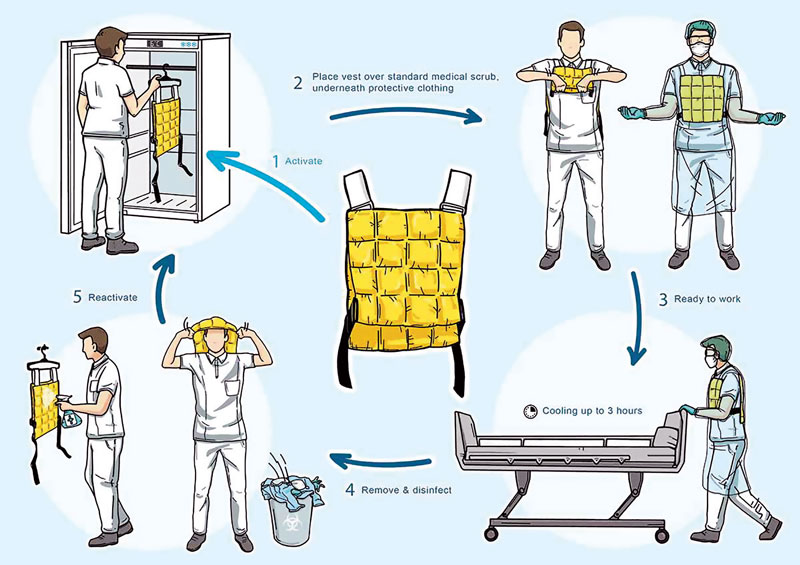Cooling Vests Proven to Be the Solution Against Heat Strain Perceived by COVID-19 Nurses
In 2020, in the Netherlands a study by the Radboudumc (Radboud University Medical Center) and TNO (The Netherlands Organisation for applied scientific research) was done to see if cooling vests would alleviate heat strain. Something COVID-19 nurses were experiencing during their battle against the uprise of COVID-19 cases. The research paper with the results was published in December 2020 and covered the effects of cooling vests worn by COVID-19 nurses.
Like many other industries, nurses wear personal protective equipment (PPE) to safely perform their medical duties. During the COVID-19 outbreak they had to wear even more PPE to protect themselves from the infectious disease outbreak. The high evaporative resistance of PPE materials formed an insulated microclimate around the skin, leading to an impaired dry and evaporative heat loss capacity, and elevation of heat stress levels. The PPE-induced heat strain is associated with increased exertion, thermal discomfort, and displacement beyond the thermoneutral zone whereas sensory displeasure impairs effective decision-making, even in the absence of elevated core temperature.
During the study the effects of wearing a 21°C phase change material cooling vest on perceptual and physiological outcomes were assessed by following seventeen nurses at work, 5 males and 12 females. They all worked at the COVID care department at the Radboudumc and everyone was followed for two days. A day with and a day without wearing a cooling vest. The vests were worn over the regular medical clothing, but under the protective clothing.
The cooling vest had a temperature of twenty-one degrees and had a weight of 1.2 kg when the nurses put them on at the start of their shift. After three hours, during their break, the vest was replaced by a new one. The vests were prepared and activated by a mobile cooler and disinfected after use, with alcohol.
Less heat stress during a shift
The research showed that the vests did not reduce the core body temperature but did have a positive effect on the nurses. The heartrate went down, and the uncomfortable feeling of the heat went from 90% (without vest) to 20-30% (with vest). Almost all the nurses said that working while wearing the vest was comparable to doing their job without the extra protective PPE. Because of the success of the cooling vests, they now wear them every day at the COVID-19 departments of the Radboudumc.

Visit Dosco.ro for more info.



